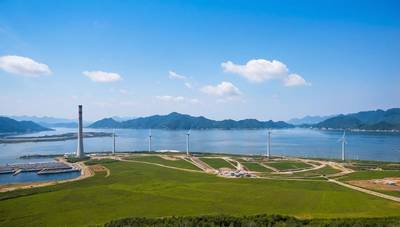South Korea plans to build two large nuclear reactors and increase the use of renewable energy in its energy mix
The South Korean industry ministry announced that the country finalised a new plan for its energy mix on Friday. It envisages building two large nuclear power plants as well as one small reactor, by the year 2038.
In a statement, the ministry stated that it also aims to ensure renewable energy of an average 7 gigawatts per year.
South Korea's nuclear power production is expected to increase from 180.5 Terawatt-hours (TWh), in 2023, to 248.3 in 2038. In addition, the share of nuclear energy generation in South Korea's energy mix will also increase from 30,7% in 2023 up to 35.2% by 2038.
The plan of Asia's 4th largest economy, which imports 98% its fossil fuels, aims to also increase renewable energy by more than fourfold, from 49,4 TWh to 205.7 in 2038.
The percentage of renewable energy in South Korea’s energy mix would increase from 8.4% in 2020 to 29.2% by 2038.
This will allow the percentage of carbon-free energy generation to increase from 30% in 2016 to 70% by 2038.
South Korea aims to produce 157.8 gigawatts of electricity by 2038. This is more than the 131.2 gigawatts that are expected from planned installations.
South Korea currently has 26 large-scale reactors in operation and is building four others.
The statement stated that two additional large-scale reactors will be required in 2037-2038.
South Korea plans to adopt the small modular reactor SMR, which will produce 0.7 GW in 2035-2036.
The country wants to reduce the amount of coal used in its energy mix, from 31,4% in 2023 down to 10,1% in 2038.
South Korea is continuing its plan to convert coal-fired power plants into liquefied gas. It also plans to convert 12 coal-fired power plants that are due to be closed in 2037-2038, to non-carbon sources of energy such as hydropower and hydrogen/ammonia mixture power generation. (Reporting and editing by Ed Davies.)
(source: Reuters)












